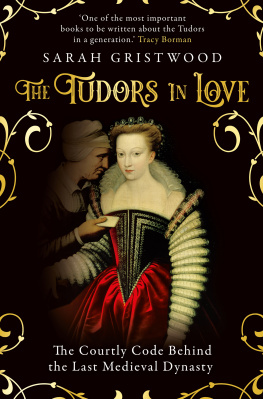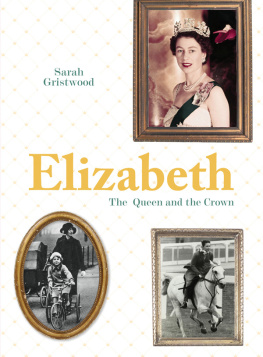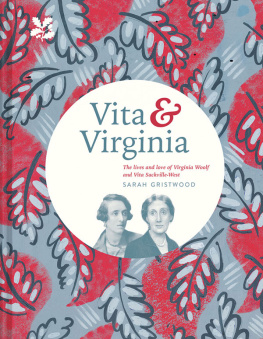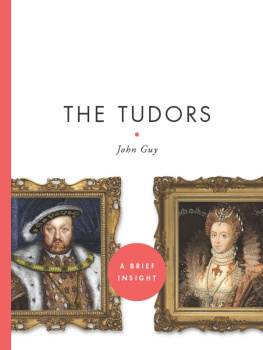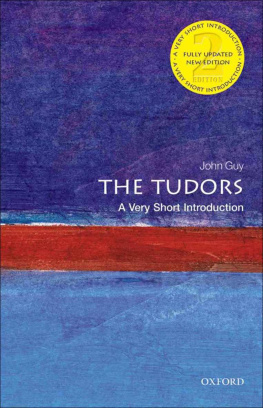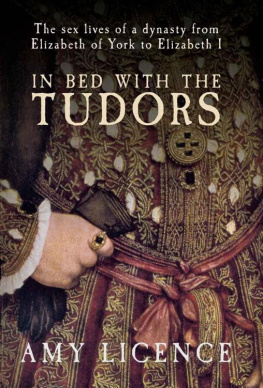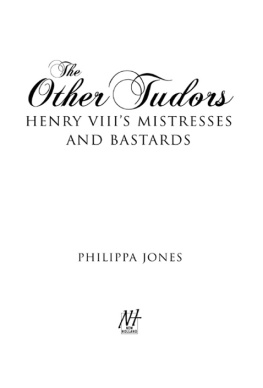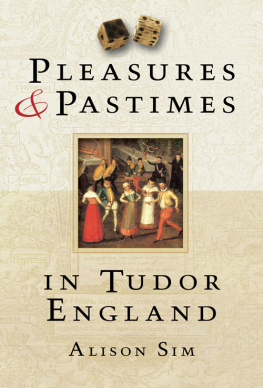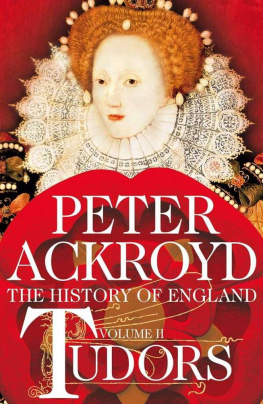Acknowledgements
The person I need first to thank, now and always, is Alison Weir, who generously found time to read this book in draft stage, and make many helpful suggestions. The very idea was born on a swaying Alison Weir Tours bus, when I delivered a talk on The Tudors in Love; and both she and Nicola Tallis encouraged me to take it further. Indeed, I should like also to thank the many AWT guests who have now become friends.
This is a pandemic production. True, it was conceived and commissioned in the halcyon days when it was possible to hold discussions over a convivial lunch. (As I write this, I can only hope it will be published into the same climate.) But much of the real work was done under lockdown conditions; which means special thanks are due to the staff of the London Library, whose service in posting out even the most recherch of volumes was over and above the call of duty. One side effect of the pandemic was to make even more precious the few people one was allowed to see: firstly, of course, my husband Derek Malcolm, who accepted with unexpectedly good grace that he was sharing lockdown with a cast of characters from the twelfth century. But also our dear friends and neighbours Paul Louis and Sheba Phombeah, to whose active support and constant encouragement I owe so much. Thanks too to Jane Williams for her part in keeping me up to the mark. Anyone who fails to understand the concept of Petrarchan contraries has clearly never taken one of her Pilates classes!
From the professional sphere, I should like to thank firstly my editor Sam Carter for his enduring commitment to the project and like Rida Vaquas, also of Oneworld for sharing his own knowledge of the medieval period. Work under lockdown conditions imposed extra burdens on everybody: to Tamsin Shelton it gave the task of dealing with my technological ineptitude, as well as the regular demands of a copy-edit. All thanks are due also to my ever-supportive agent, Donald Winchester. On this as every book I have ever written, I owe an immense debt of gratitude to my old friend and colleague Margaret Gaskin, for her invaluable role in shaping, trimming, correcting and generally birthing my early text.
A book with as broad a historical sweep as this one can only leave the author standing on the shoulders of others giants all to a degree even beyond the norm. If I have failed correctly to interpret their work I can only apologise: any errors here, of course, are mine alone. Every person who aided my other books on the Tudor period, moreover, has essentially played a part here. One thing, however, has sadly changed this time around. During the course of the virus, separated by lockdown, I lost my beloved stepfather, Professor R.G. West, whose example always inspired me to try to do better. Richard always in my memories.
Appendix
The Many Faces of Guinevere
Guinevere had been encountered many times before Chrtien de Troyes brought her centre stage: a position she would continue to occupy. It is from an early world a world, even, where writers do not feel the need to apportion Christian blame that she first enters the Arthurian story.
The older stories carry with them the misty whiff of legend off the Welsh hills. Often this early Guinevere would be a sorceress a wonder woman. The very name Gwenhwyvar means the white ghost, while the goddess manifest in three forms, as in the list of Arthurs queens from the Welsh Triads, is an idea from Celtic mythology.
In the real world of Celtic queenship, Guinevere could have been her husbands equal, able to lead armies like Boudicca or take lovers like Cartimandua. Even when, in 1190, Layamon, a parish priest living on the upper reaches of the River Severn, came to write his Brut the narrative poem that has been called the first real Middle English literature his Wenhaver is queen in a world (Anglo-Saxon in feeling) where women dont merely inspire knights, but instead themselves do deeds of valour and of cruelty.
Guineveres women scour the battlefield to slaughter the army of her abductor: in her husbands dream she stretches out her hand and draws down the roof of his hall, a figure of anger and potency whom Arthur hacks to pieces in revenge. In the Rise of Gawain , in years ahead, Gwendolena is not only Arthurs wife but also a powerful prophetess.
In one of the earliest stories of the Mabinogion she is included in a catalogue of Arthurs possessions: his ship, his mantle, his sword Caletvwlch and wife Gwenhwyvar one of the gentle gold-torqued women of the island. But even this passive Guinevere plays a role that is an archetype of mythology. For centuries Guinevere would feature repeatedly as the victim of abduction often with an element of superstition about it.
In the saints life of St Gildas written by Caradoc of Llancarfan probably between 1130 and 1150, Gildas comes to the summer country (Somerset?), whose ruler King Meluas violates and carries off Guennuuar, wife of the tyrant Arthur, and hides her behind the reeds and rivers of Glastonbury, which here has some of the features of a Celtic otherworldly kingdom. It takes Arthur and his Cornish armies a year to find her, while the great annual cycle of the seasons rolls by; a pattern celebrated in pre-Christian mythology.
In the early Welsh poem Ymddiddan rhwng Arthur a Gwenhwyfar , Melwas comes disguised to Arthurs court because he has heard of Guineveres beauty, Gwenhwyfar of the deers glance. Sometimes she is carried off by a fairy lover, an otherworldly figure, who had loved her when she was herself a fe . A willing Persephone, or Deidre.
Quite soon, in story after story French and German, as well as British the more earthly figure of Mordred (Medraut), often the kings nephew or illegitimate son and supplanter, would be actually abducting Guinevere, with or without her consent.
One triad on Three unrestrained ravagings of the island of Britain has Mordred coming to Arthurs court where he dragged Gwenhwyvar from her royal chair and then struck a blow upon her. Another suggests that it was a quarrel between Gwenhwyvar and her sister Gwennhwyfach that led to the Battle of Camlan where Arthur fell. (That is why these Battles were called Futile, because they were brought about by such a barren cause as this.) Guinevere was already a fateful queen who brings trouble but not necessarily burdened with the weight of sexual guilt later centuries would load on her.
In the 1130s the Welsh cleric Geoffrey of Monmouth translating into Latin, he said, a very ancient book in the British language described deeds handed down joyfully in oral tradition... by many peoples. His History of the Kings of Britain was largely fictionalised but it was taken, nonetheless, as giving the first authoritative version of the Arthurian story.
Geoffreys Arthur marries Guanhuvara, or Gwanhumara, of Roman descent, brought up in the household of Duke Cador the most beautiful woman in the whole island. He gives little of her character but, instead, a lengthy description of her coronation, four queens walking before her, carrying white doves. The ceremony perhaps implies that Guinevere had some rights in the crown herself which may explain why, when Arthur is away, his nephew Mordred not only takes the crown but lives adulterously and incestuously with Guinevere. This may refer to an old custom whereby rights in the crown and the land descended in the female line, and a successful war leader could claim them by marriage. When Guinevere, in so many early versions of the story, is appropriated by her husbands supplanter, we need to be aware that the pre-Conquest kings Ethelbald and Cnut would marry their predecessors wives as another way of colonising their territory.
But it also reflects the times in which Geoffrey himself lived. This was the time of the Anarchy the civil war over whether the throne of England should be inherited by Henry Is daughter Matilda, or by his nephew Stephen. Geoffreys insistence on Arthurs journeying into France may even have been a propaganda weapon aimed at encouraging Matildas French adherents. His descriptions of Arthurs court of Caerleon are full of twelfth-century detail, and of the new innovations tournament and heraldry introduced into England in part by Matildas Plantagenet husband.
Next page
